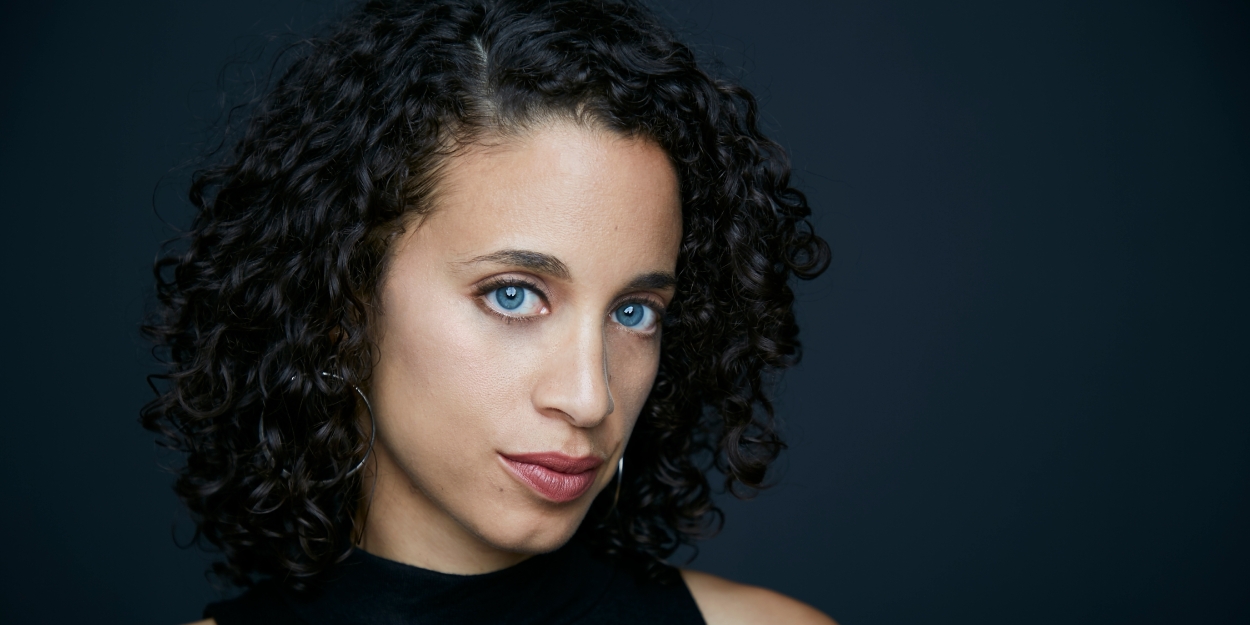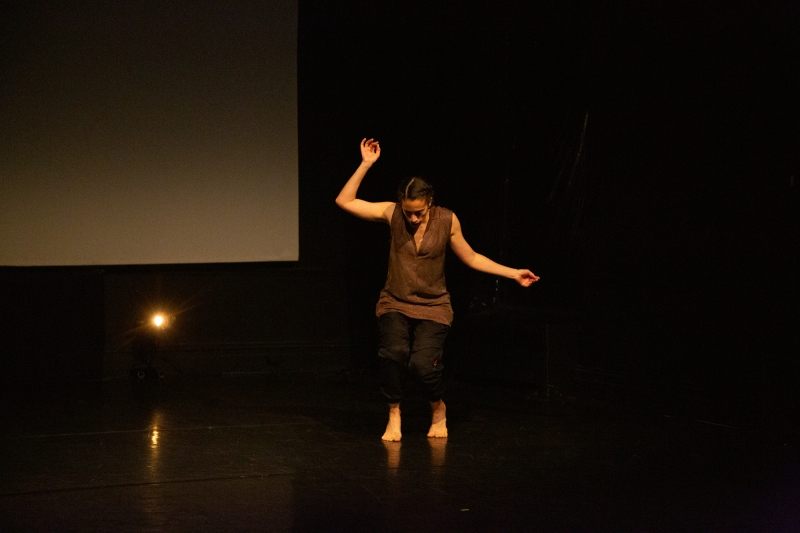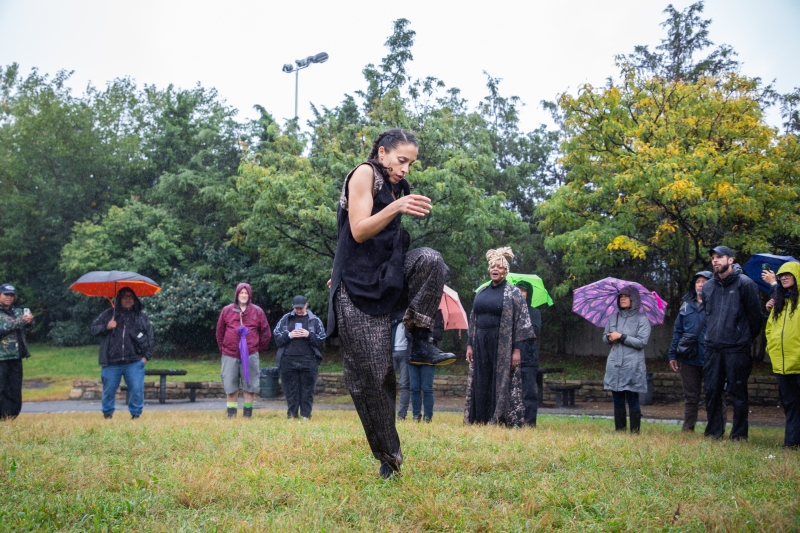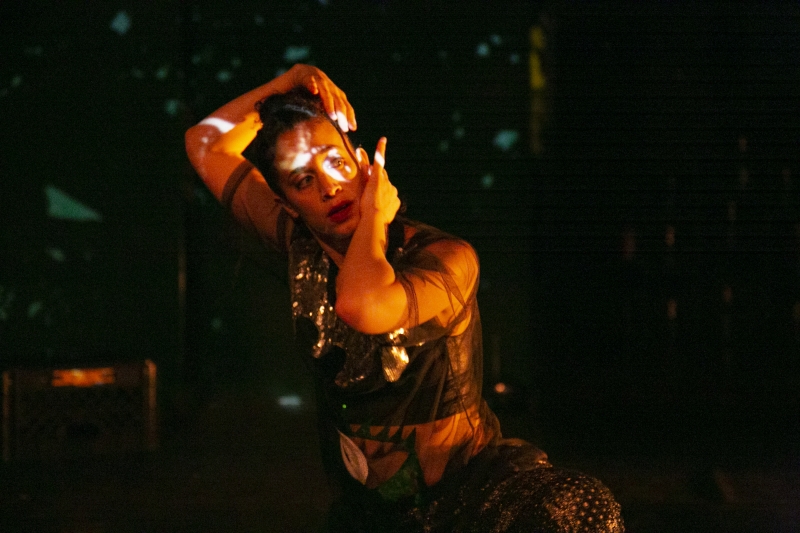Conversations with Creators: Meet Bronx-Based Artist Alethea Pace
Conversations with Creators gives insight into the artist mindset of top industry creatives.

"I think the necessity to shapeshift, to be adaptable and to read a situation show up as key parts of a 'Bronx aesthetic' expressed in my work," says Bronx-based movement artist Alethea Pace. Pace is a multidisciplinary creator committed to making work in and with her community that is rooted in social justice. She is a 2023-2025 Civic Practice Partnership Artist in Residence at the Metropolitan Museum of Art and a 2024 MAP Fund grantee. A recipient of the 2021 Dance MagazineHarkness Promise Award, her work has been presented by The Metropolitan Museum of Art, BAAD!, Works & Process at the Guggenheim, Pregones Theater, Dancing While Black, Danspace Project, New York Live Arts, and the 92NY, to name a few. She has received residency support from Loghaven Residency, TN, Keshet Arts, NM, and Modern Accord Depot, NY.
As a dancer, Pace has performed with a variety of choreographers and was a member of Arthur Avilés Typical Theatre from 2001 to 2008. She has been a collaborator in numerous multimedia community-centered projects including with Angela’s Pulse, Dancing in the Streets, and the Laundromat Project. In 2019 she worked as an associate producer on the award-winning documentary Down a Dark Stairwell, directed by Ursula Liang. Pace trained at Mind-Builders Creative Arts Center in the Bronx, and has a BA in Urban Design from NYU and an MFA in Digital and Interdisciplinary Arts from the City College of New York. She is an adjunct professor at Lehman College.
You have presented work as a choreographer in many esteemed New York based venues and communities. How did you originally enter the world of performance art and dance?
I started dancing at a school called Mind Builders Creative Art Center in the Bronx. I was part of a group of scholarship students who had the opportunity to perform at local community events in addition to our spring recitals. During my last year there, just before graduating from high school, I met a choreographer who invited me to join her company and since that moment, I never stopped dancing. For many years, I worked as a dancer in other people's works but then, in 2016, I took the leap and began creating my own work.
Was there a single moment or project when you realized that this was your calling?
No, there wasn't a single moment. In fact, it took many years for me to acknowledge myself as an artist, even though I was always creating. It's been a very slow burn.

How does your culture and roots inform your movement style and artistic voice?
I'm deeply rooted in the Bronx! I make work in, with, and for my community, and facilitate spaces where we can share our stories, memories and imaginations. My work explores the history of the Bronx and its people, particularly Black and Brown folks. I invent new mythologies that contest and reimagine our history as a way to dream of radical possibilities for the future.
My vernacular, in both movement and text, is definitely informed by having grown up here. I often think about all the ways we navigate space in the urban environment. We might have to make ourselves bigger or smaller, slippery or rigid, as we move from one block to the next.

What does your choreographic processes look like in a rehearsal space? Where does your inspiration typically come from, or is it project dependent?
Inspiration often springs up in unexpected ways and doesn't usually reveal itself clearly at the onset of a process. I might begin to pursue some seed of an idea through academic research but, parallel to any intellectual inquiries I may have, my practice is always rooted in an embodied exploration. I go to the studio, with or without a clear inspiration or direction, and move my body. It takes time, but eventually I discover the alignment of the idea and the physicality. The process begins as a solo practice to establish a solid foundation. Once the foundation is clear, I invite others to join in the space, and collaboration becomes the core practice.
When do you feel most powerful?
I feel powerful when I recognize that I stand on the shoulders of many other folks—my family, friends, collaborators, teachers, students, community, and ancestors. I don't move through this world alone, as an artist or as a human, and I find strength in our interdependence.

What are you hoping to change or inspire within the dance industry/the world as you continue to move through it?
I'm trying to decenter performance/product as the primary driver in my work (and my life) and amplify process/practice as the core of making. I am challenging myself to slow down, look deeply and to allow the work to evolve from building authentic connections and relationships.
What are you most excited for next?
I'm excited about having some time to rest! I just completed a project that was two years in the making. Having a little bit of down time before diving back into the thick of things will allow me to recover, recharge and reconnect with the rest of my life.
Photo Credit: Whitney Browne
Comments
Videos

